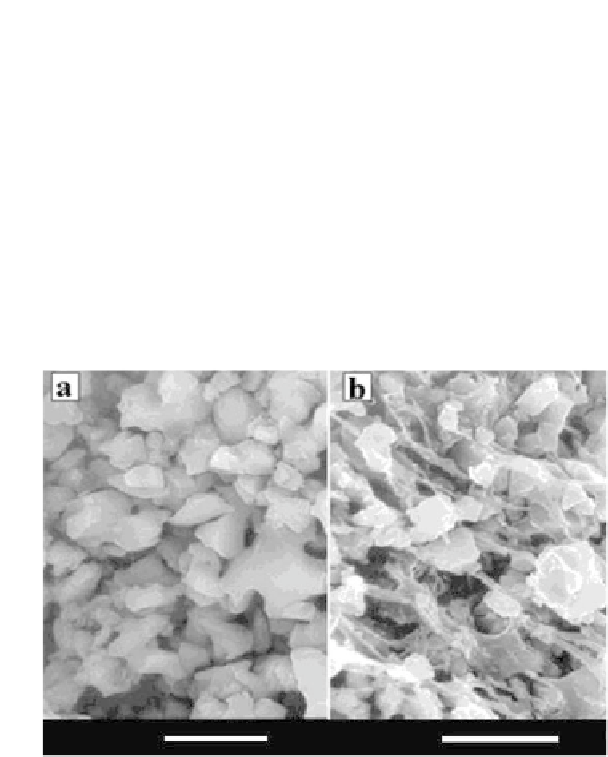Biomedical Engineering Reference
In-Depth Information
Durucan and Brown [53, 393, 394]. The authors prepared CDHA/
PLA and CDHA/PLGA biocomposites by solvent casting technique
with a subsequent hydrolysis of α-TCP to CDHA in aqueous solutions.
The presence of both polymers was found to inhibit α-TCP hydrolysis,
if compared with that of single-phase α-TCP; what is more, the
inhibiting effect of PLA exceeded that of PLGA [53, 393, 394]. The
physical interactions between calcium orthophosphates and poly(α-
hydroxyesters) might be easily seen in Fig. 6.2 [53]. Another set of
good pictures might be found in Ref. [87]. Nevertheless, it should not
be forgotten that typically non-melt based routes lead to development
of composites with lower mechanical performance and many times
require the use of toxic solvents and intensive hand labor [178].
Figure 6.2
SEM micrographs of (a) α-TCP compact; (b) α-TCP-PLGA
biocomposite (bars = 5 µm). Reprinted from Ref. [53] with
permission.
The mechanical properties of poly(α-hydroxyesters) could be
substantially improved by addition of calcium orthophosphates
[395, 396]. Shikinami and Okuno developed CDHA/PLLA composites
of very high mechanical properties [168]; mini-screws and mini-
plates made of these composites have been manufactured and
tested [388]. They have shown easy handling and shaping according
to the implant site geometry, total resorbability, good ability to
bond directly to the bone tissue without interposed fibrous tissue,


Search WWH ::

Custom Search